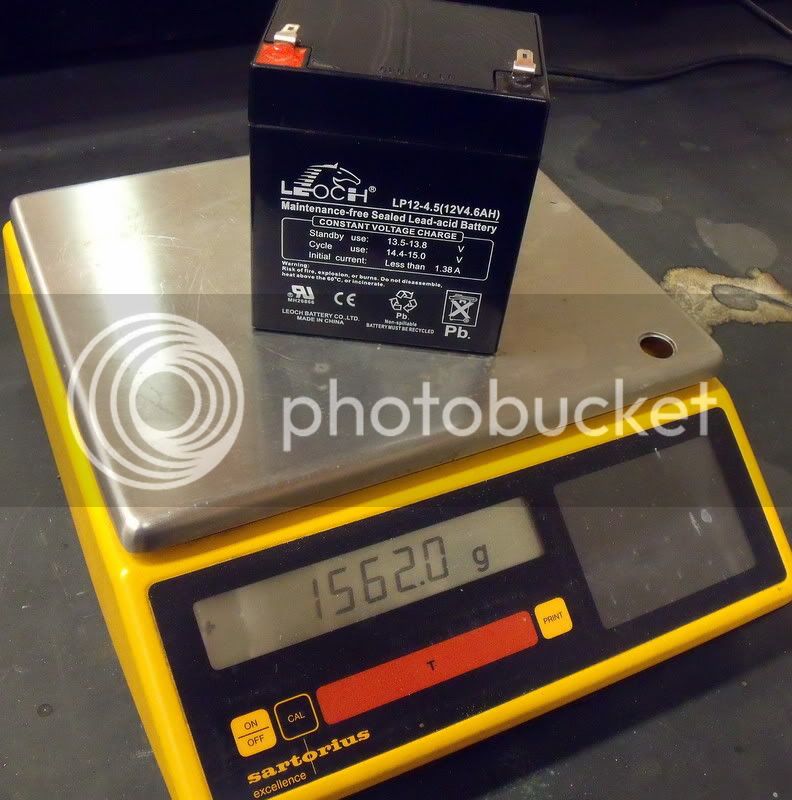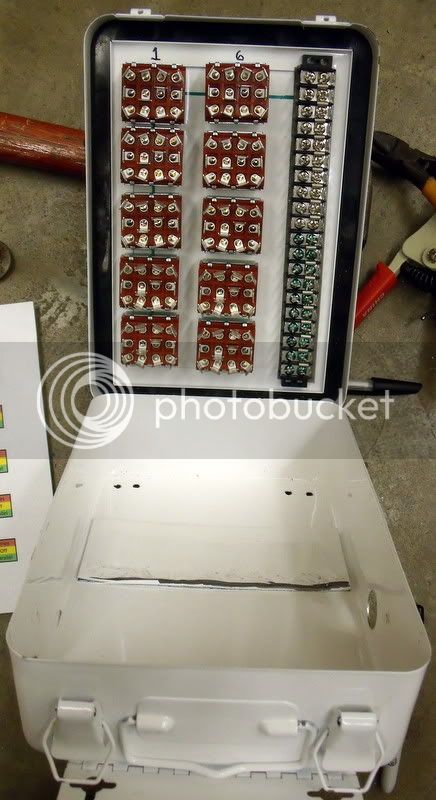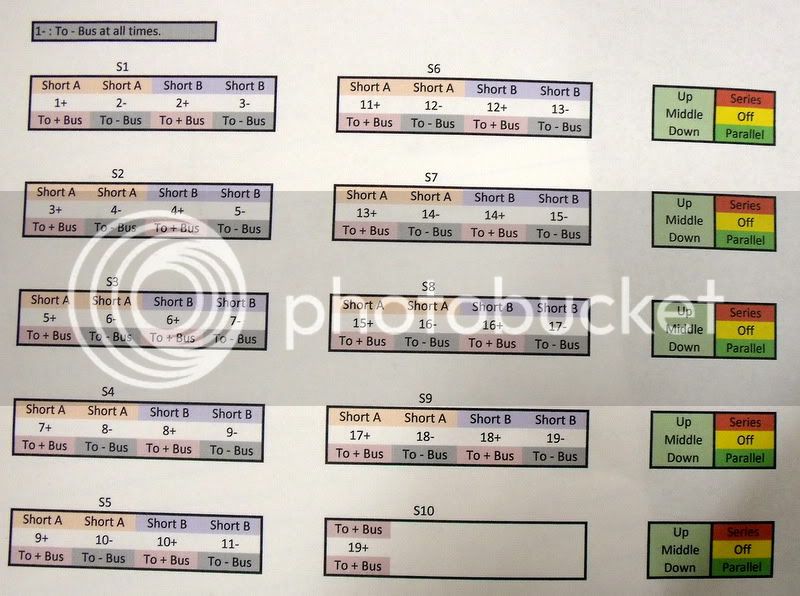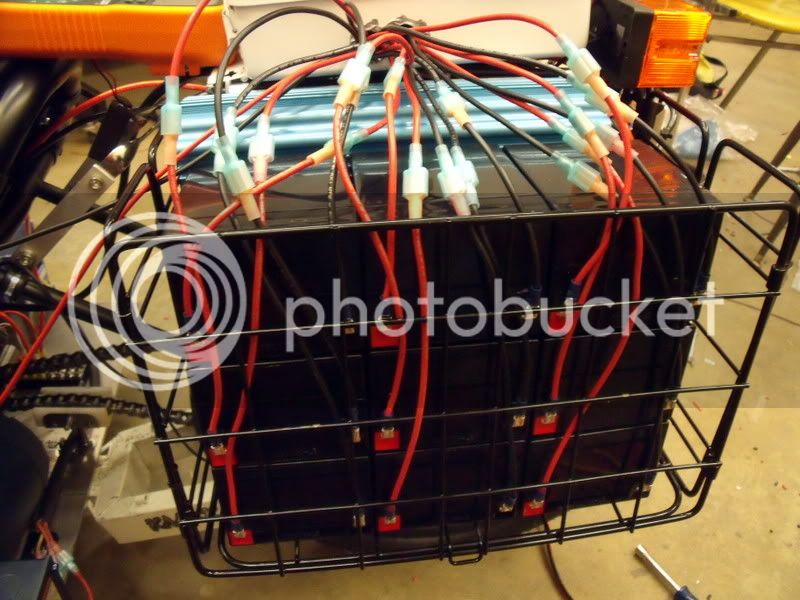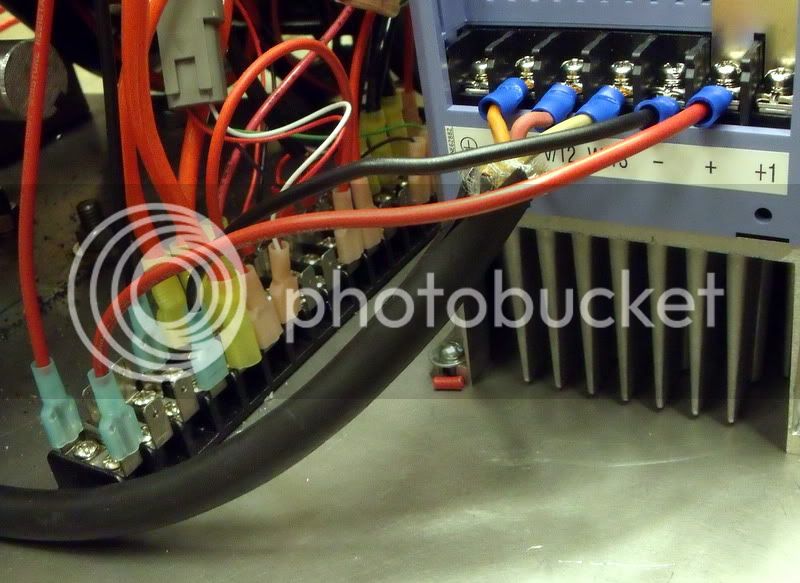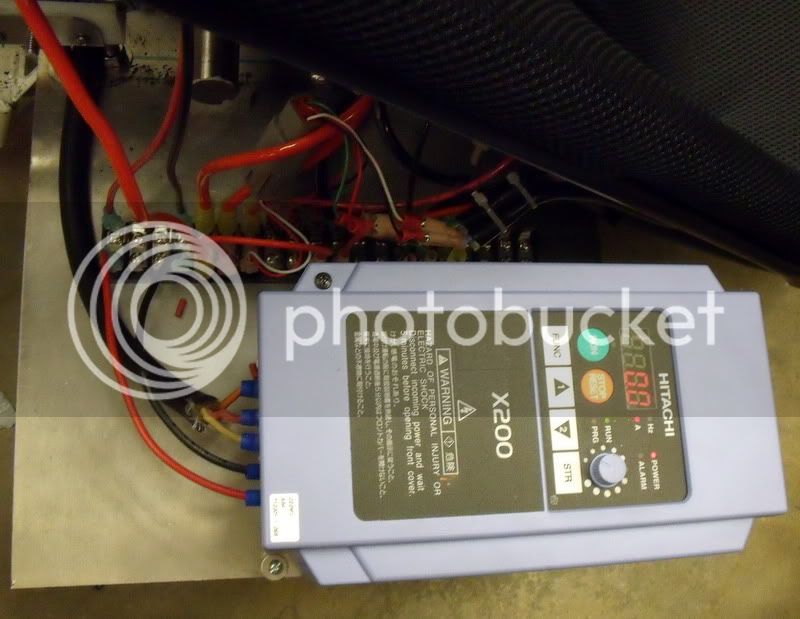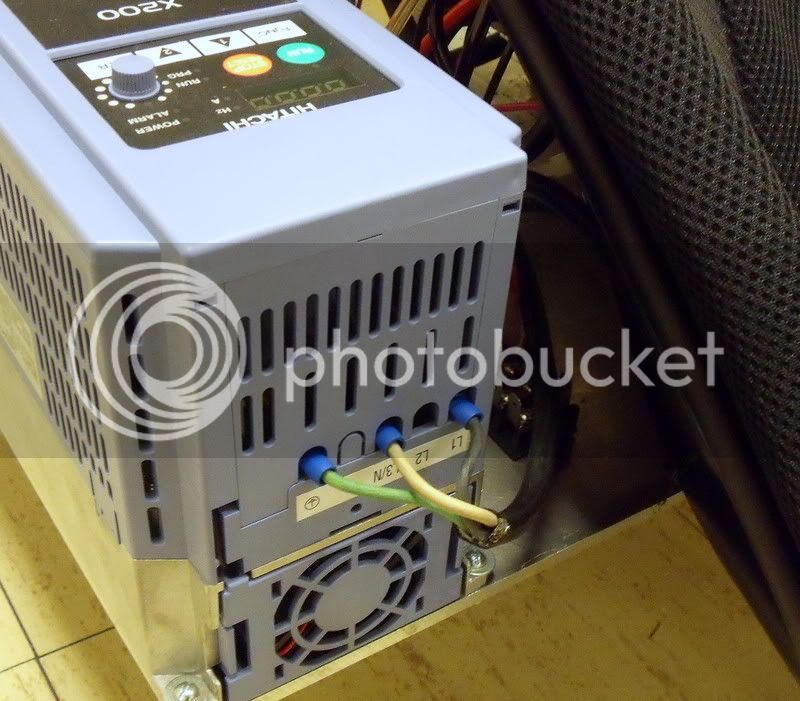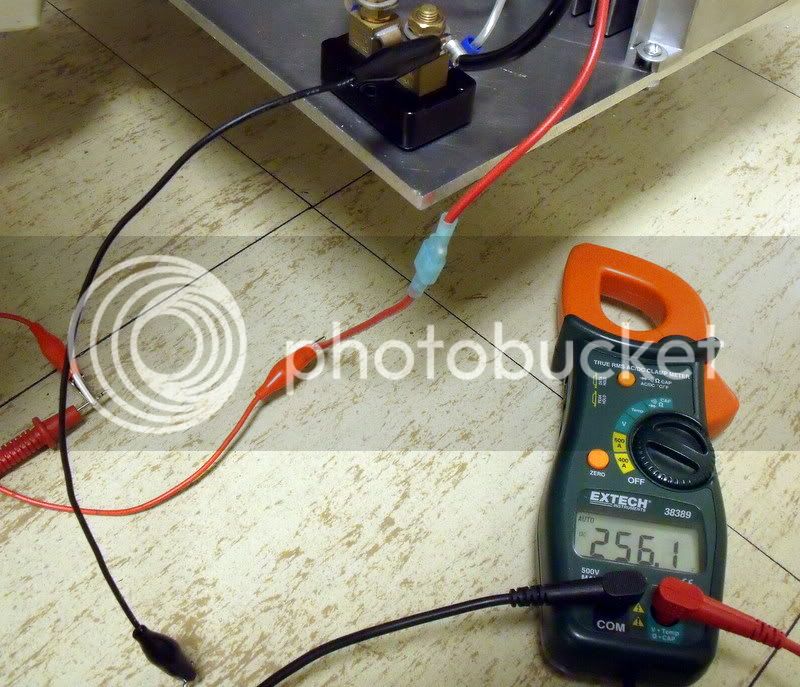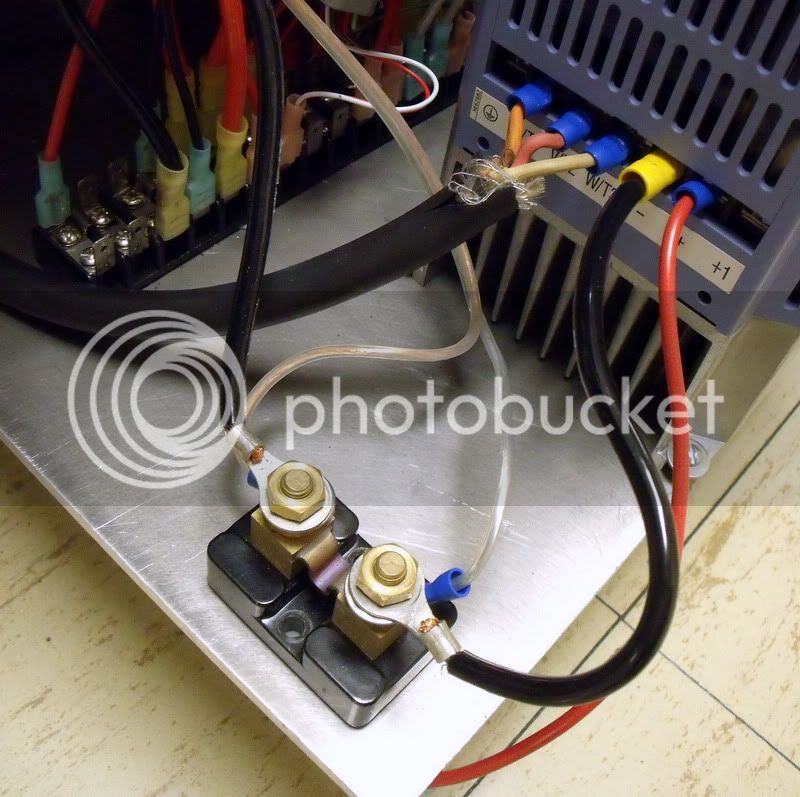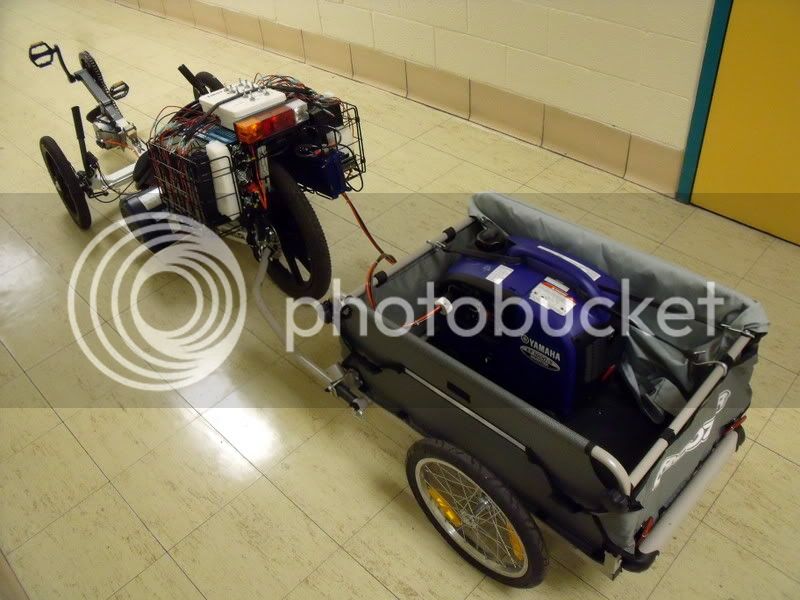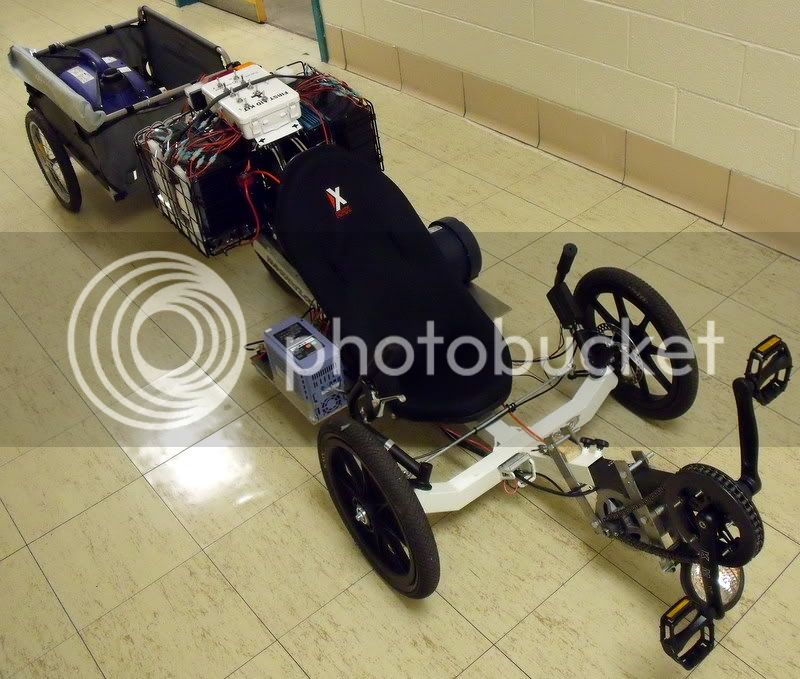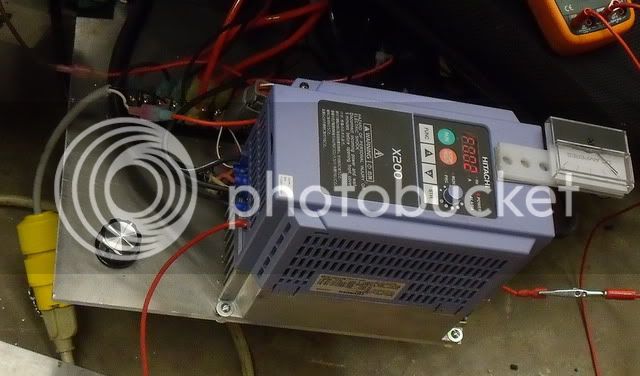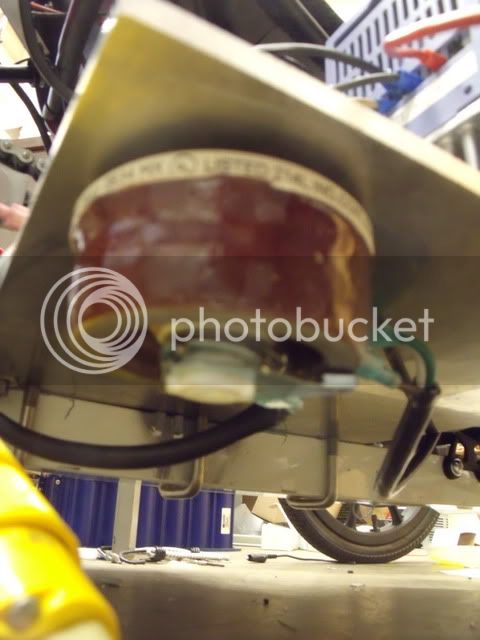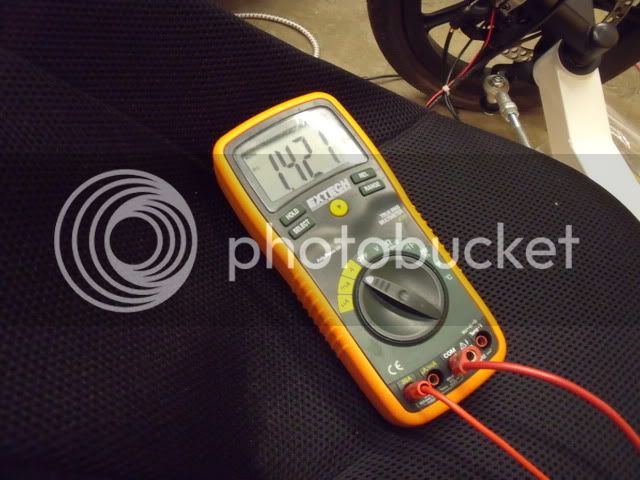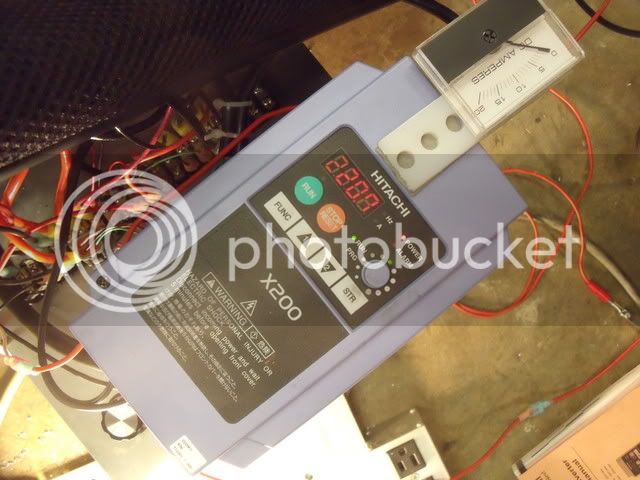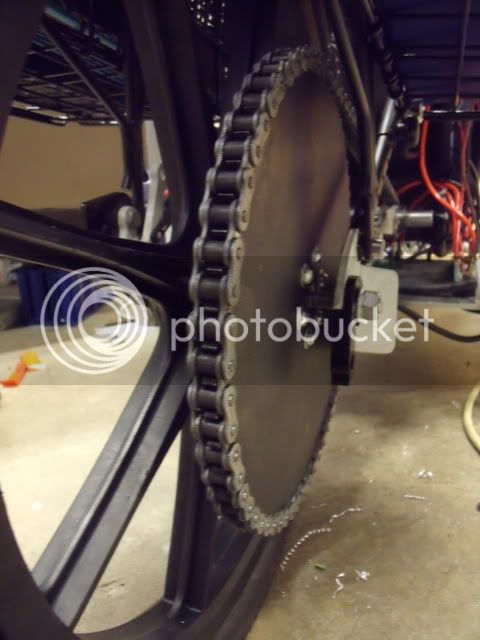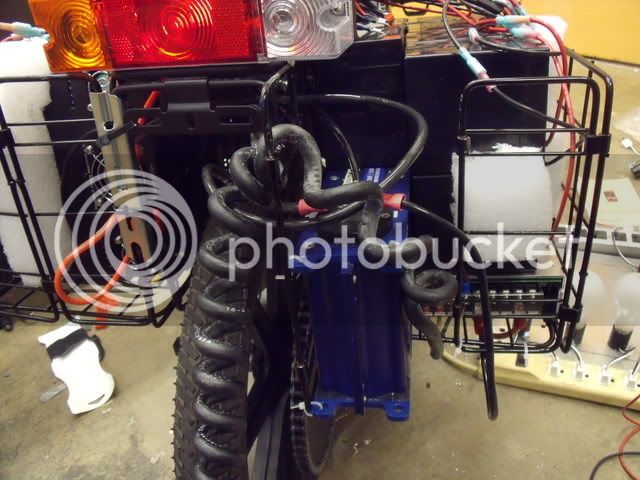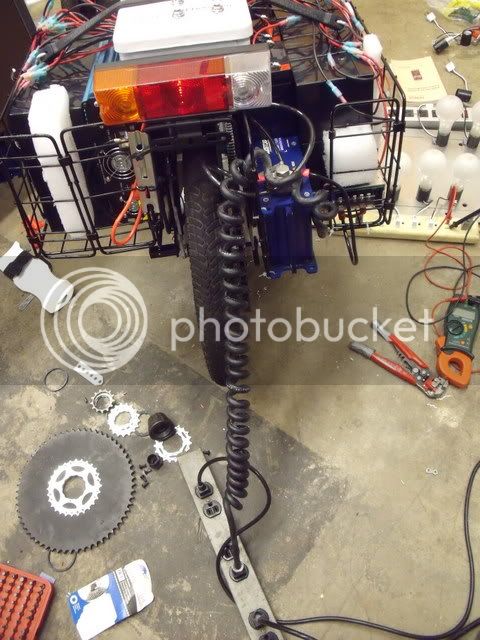I think it's time to make another update on the AC Trike, which I am now referring to as "The Monstrosity." You'll see what I mean.
I hooked things up just like I'd intended in one of my previous posts, which was (in terms of a power pathway):
Generator --> 15 V power supply --> 990 F, 15 V Ultracaps --> Inverter, 15 VDC to 220 VAC (modified sine wave) --> AC variable frequency drive --> 3 phase AC motor
Two major problems arose: first, the original 15 V power supply, rated at 645 W, had constant current overload protection which attempted to throw around 55 A into the caps until they were very nearly full charge. This threw the generator (1 kW peak) into overload, its engine slowed down, output voltage and current dropped. Once this happened, the generator never recovered, switching off after a few seconds. After trying a lot of dumb workarounds, I gave up and got a similar unit which was rated at 480 W, and it provided a manageable (for the generator, anyway) constant overload current of 45 A, which will not cause a generator shutdown. The second problem was the inverter. It is rated for 1500 W and this is fine for most cruising you'd try to do. But, unfortunately if you draw even just a slight amount more than its rated 6.8 A - even for a fraction of a second, it shuts down and requires an off/on cycle. Very annoying, especially when it happens on a hill. I tried to program an appropriate current limit into the motor drive, but it was not 100% reliable. So, I thought again about rhitee's earlier comment.
rhitee05 said:
Running DC directly to the controller would remove two stages, since the controller internally rectifies to DC then re-inverts to AC (the data sheet you posted shows this). Getting 220VDC would be trickier, but still doable. Running a high-voltage DC bus has the added advantage of lower currents, thus lower losses and thinner wires needed.
Assembling a 200 VDC capacitor pack would be cost prohibitive, but using SLA batteries the same way would not. If I chose batteries small enough, I could get a 200+V pack without it weighing a ton. The goal was to allow the inverter to supply power as it could, but if its draw became excessive, the batteries could feed energy into the motor controller's DC bus (and also be "float charged" by the DC bus when the inverter was not overstressed). I couldn't feel safe using any other battery chemistry without a BMS of some type, and SLAs have a good tolerance for float charging in series. The new strategy, overall:
[pre]Generator --> 15 VDC power supply --> 330 F, 15 V Ultracap --> Inverter --> AC VFD --> 3 phase AC motor
250 V Battery Pack <--|[/pre]
The first step was to purchase enough SLAs to make the right sized bank. The motor controller requires a DC bus voltage between 195 V and 395 V DC to avoid under- and over-voltage trips. When powered using the inverter's 220 VAC input, the bus would rest at around 250 VDC. The recommended float charge potential for SLAs is 13.5 V per battery, so I'd require 19 batteries to be within the safe float charging regime. I decided on Leoch 4.5 Ah SLAs, which weigh about three and a half pounds each.
To get all the SLAs charged and balanced after receipt, I connected them in series and float charged at 13.5 V for a couple of days.
I had planned on charging them in parallel like this once, then connecting them in series:
However, I didn't look forward to figuring some awkward and probably unsafe way of getting them back to parallel every now and then to make sure that they were balanced. Somewhere on this forum I read about using double throw switches to make series/parallel connections, and I proceeded to take the idea to a ridiculous level of complexity.
Something about this first aid kit looks a bit strange...
I used it as an enclosure for a total of ten four pole, double throw (4P2T) switches; although I really only needed nine for nineteen batteries. Here is the box before wiring:
The switches were three position "on-off-on," where the middle "off" position was absolutely critical during switching. The idea was to follow a certain pattern for battery wiring to allow "series-off-parallel" wiring.
Things weren't too bad with the shorts wired,
But things quickly got more complicated and space ran short. Here's the completed wiring inside of the box. The 20 A fuse is in the series circuit, of course.
It took a few days for my fingertips to recover from all the wire twisting, crimping, and pushing the quick disconnects. A couple of holes were punched in each side of the first aid kit, and the wires were run out to the side racks, which now held the batteries. Here's the left side:
And the right.
More quick disconnects here allow me to remove things from the racks as needed. When all the switches face the front of the trike, the batteries are in parallel.
Turning all of the switches off, and then towards the back of the trike, we have a series connection.
The extra space taken up by the batteries required mounting the motor controller up front. This is a good thing, in that now I can use the built-in speed dial and also have ready access to the stop button (used as a kill switch), and can monitor motor current or frequency just by looking down at the display.
The motor phase wires are connected as before, and I used the batteries in a direct connection to the DC bus to test with the controller (no AC input).
The inverter is connected to the 1-phase AC input terminals on the controller, and it powers up the DC bus to over 250 V when running normally.
I re-installed the shunt resistor on the negative high voltage DC bus, but I may get rid of it as it's giving me shaky readings. Here you can see it with the positive line disconnected.
In fact, the positive line is always disconnected unless I'm driving, for safety. Also, when powering up the controller using the batteries (no inverter power), I use a "sparker" or sacrificial wire to make sure that the controller's inrush doesn't create an internal spark to destroy the switches.
Once the controller's caps are charged, I disconnect the sparker and connect the positive HVDC line to the terminal strip. Here's the overall trike, with the generator-trailer attached.

One note I'd like to make to anyone considering multiple voltage buses on their vehicle:
make sure to connect every unit to the same chassis ground! My 250 VDC and 15 VDC buses share a common
negative chassis ground, and the AC power delivery systems (generator, inverter) are also grounded to this unified negative bus. Do this, and you'll save time & money (and won't risk a fire).

So far, it looks like this system (while ugly) works pretty well. I can leave the trailer behind, leave the inverter powered down, and use only the batteries to get around - charging them in parallel when I'm done. Maybe best of all is that the higher voltage causes each battery to deliver relatively little current, so that they might actually deliver a decent percentage of their rated capacity. That's important, since if I could squeeze at least 3.5 Ah out of these 4.5 Ah batteries, I would expect a total usable energy of around 800 Wh for this pack. For longer trips, I can hook on the trailer and generate electricity as I go (the real long-term goal: cross country cruiser). I'll be doing some test drives tomorrow if I can - should be fun.


